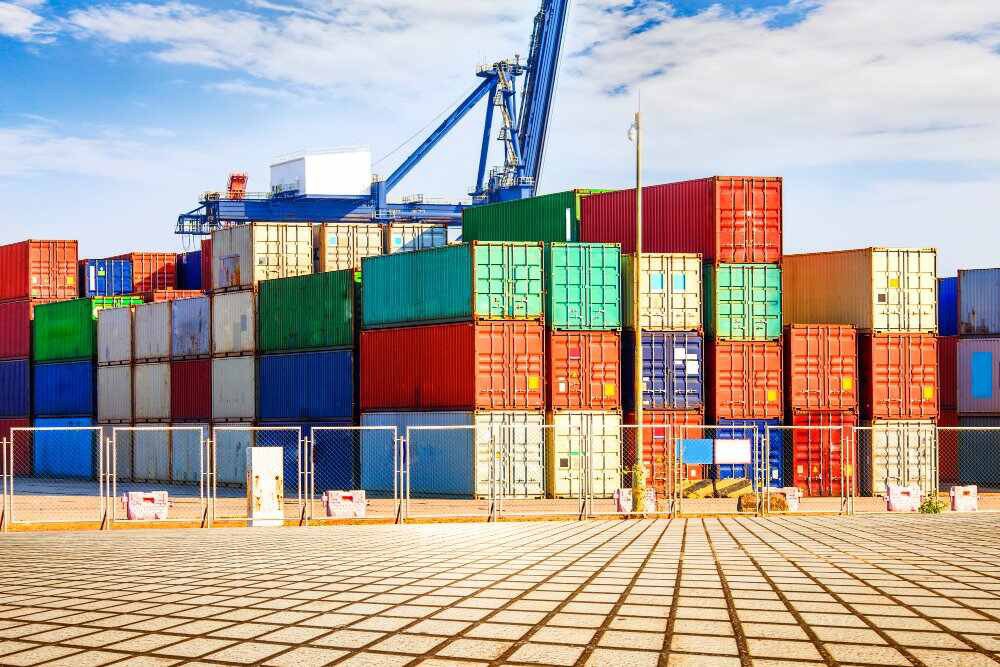
Ocean freight shipping is an essential part of international trade because it allows the shipping of goods across continents and connects companies worldwide. Although ocean freight has many advantages, such as low costs and high capacity, navigating it can present difficulties that may affect the success of your shipping operations.
Although ocean freight is regarded as the best method of transportation for large shipments, it has some drawbacks and risks of its own. It might move relatively slower than other freight modes, and inclement weather might make it move even more slowly.
5 Big Challenges Faced By Ocean Freight
The supply and demand fluctuations drive operating costs and hurt the bottom line, putting pressure on the global logistics sector. Issues with the supply chain have been in the news for a while.
Ocean freight has recently gained popularity and is frequently chosen by companies looking for more cost-effective and environmentally friendly alternatives to air transportation. However, ocean freight has its own set of issues, including:
Shipping Container Shortage
Numerous manufacturers shut down their operations in response to the declining demand after the pandemic was declared. Numerous shipping containers that were typically used to transport manufactured goods ceased to operate, were stored at ports, and were no longer picked up. This significantly reduced the ocean's ability to carry freight.
Rising Freight Costs
Ocean freight rates for the main shipping routes increased by over 300 percent as a result of the global container shortage and are still very high today. Freight costs for lower-value goods like toys, household goods, apparel, and promotional items have increased from 5% to more than 20% of their sourcing costs.
Port Congestion
Most of these containers continue to be placed in unnecessary locations. Ships arrive at the port but cannot load or unload because it is already over capacity. The only way to get a spot at the port is to stand in line and patiently wait for your turn. Loss of time and the ensuing financial loss result from this.
Lack Of Carrier Capacity
Securing carrier capacity for shipments is another significant issue businesses must face today. The carriers are overworked, which lowers the reliability of ocean freight services as a whole.
Crew Shortages
One of the main challenges facing ocean freight shipping is this. It's just that there aren't enough young shipping experts. Insufficient new resources are introduced to replace experienced personnel as they retire. The level of demand will be difficult to reach due to these consequences.
Practical Ways to Prevent Sea Freight Delivery Delays
We'll look at some essential advice to assist you in overcoming these difficulties and succeeding in ocean freight shipping.
Understanding Ocean Freight Rates
The ability to manage and comprehend ocean freight rates is one of the first difficulties you will face in the industry. Expenses incurred when shipping goods by sea are called ocean freight rates. Several factors, including the price of fuel, patterns of supply and demand, and the economy's health, can affect these rates, including fuel cost.
To navigate this challenge effectively, staying informed about the current market trends and fluctuations in ocean freight rates is crucial. Keep track of industry news, market reports, and engage with freight forwarders who can provide valuable insights into the prevailing rates. Additionally, consider negotiating long-term contracts with shipping lines to obtain advantageous rates and guarantee consistency in shipping costs.
Tracking Your Ocean Freight
Tracking your shipments as they travel is a significant obstacle in ocean freight shipping. It is crucial to have a solid system in place for tracking and keeping track of your cargo as it moves over great distances and changes hands frequently.
Utilize the technology offered by ocean shipping companies or freight forwarders to track your shipments in real time. These tracking systems use cutting-edge technologies like GPS, RFID, and satellite communications to deliver precise and current information on the whereabouts and condition of your cargo. With access to this data, you can proactively keep your customers informed, manage any delays or disruptions, and guarantee prompt delivery of your goods.
Managing Ocean Freight Charges
Other than freight rates, there are additional fees associated with ocean freight shipping that can greatly impact your overall shipping costs. These fees could be for terminal handling, paperwork, customs duties, port fees, and more. It is imperative that you comprehend these fees in full and account for them in your shipping budget.
Working closely with your freight forwarder or shipping company will help you gain transparency on the costs of your shipments, which will help you manage ocean freight charges more effectively. Investigate opportunities to reduce costs by condensing your cargo or optimizing your shipping routes. Additionally, to ensure billing accuracy and spot any potential inconsistencies, think about using freight auditing services.
Choosing the Right Ocean Shipping Line
The success of your ocean freight shipping operations depends on your choice of the ocean shipping line. Various shipping lines offer varying degrees of service, have different geographic coverage, and specialize in handling different kinds of cargo. Conduct in-depth research and evaluate shipping companies according to their track record, dependability, transit times, and client testimonials.
Consider working with shipping firms that have a vast global network and offer dependable schedules to lower the likelihood of delays. It is crucial to assess their customer service capabilities in order to be ready to handle any issues that may arise during shipping. This is because timely and efficient communication is crucial.
Optimizing Packaging and Documentation
Ocean freight shipping requires careful packaging and documentation, which can help you avoid delays, damages, and expensive fines. Ensure your products are packaged safely, considering the cargo's nature, fragility, and weight. Make use of the proper packaging supplies and methods to withstand the challenges of maritime transportation.
Additionally, accurate and comprehensive documentation is essential for facilitating efficient customs clearance procedures at ports of entry. Verify each and every required document, including any additional certificates or permits, commercial invoices, packing lists, bills of lading, and more. You can better understand the intricacies of documentation requirements by coordinating closely with knowledgeable customs brokers or freight forwarders.
Conclusion
Ocean freight shipping has a number of difficulties that call for thorough planning, proactive management, and teamwork with dependable partners and service providers. You can improve the effectiveness and achievement of your ocean freight shipping operations by being aware of and addressing these difficulties.
Keeping up with ocean freight rates, tracking your shipments, limiting freight costs, picking the best shipping company, and optimizing packaging and documentation are just a few ways to deal with the difficulties of ocean freight shipping.
One can easily use some of the methods to avoid such delays. This may include optimizing the supply chain or planning seasonal weddings. To avoid delays in sea freight delivery, suppliers and manufacturers should be aware of the important factors for importers and plan for as many potential outcomes as possible.





 Get instant quote
and compare offers in real time
Get instant quote
and compare offers in real time